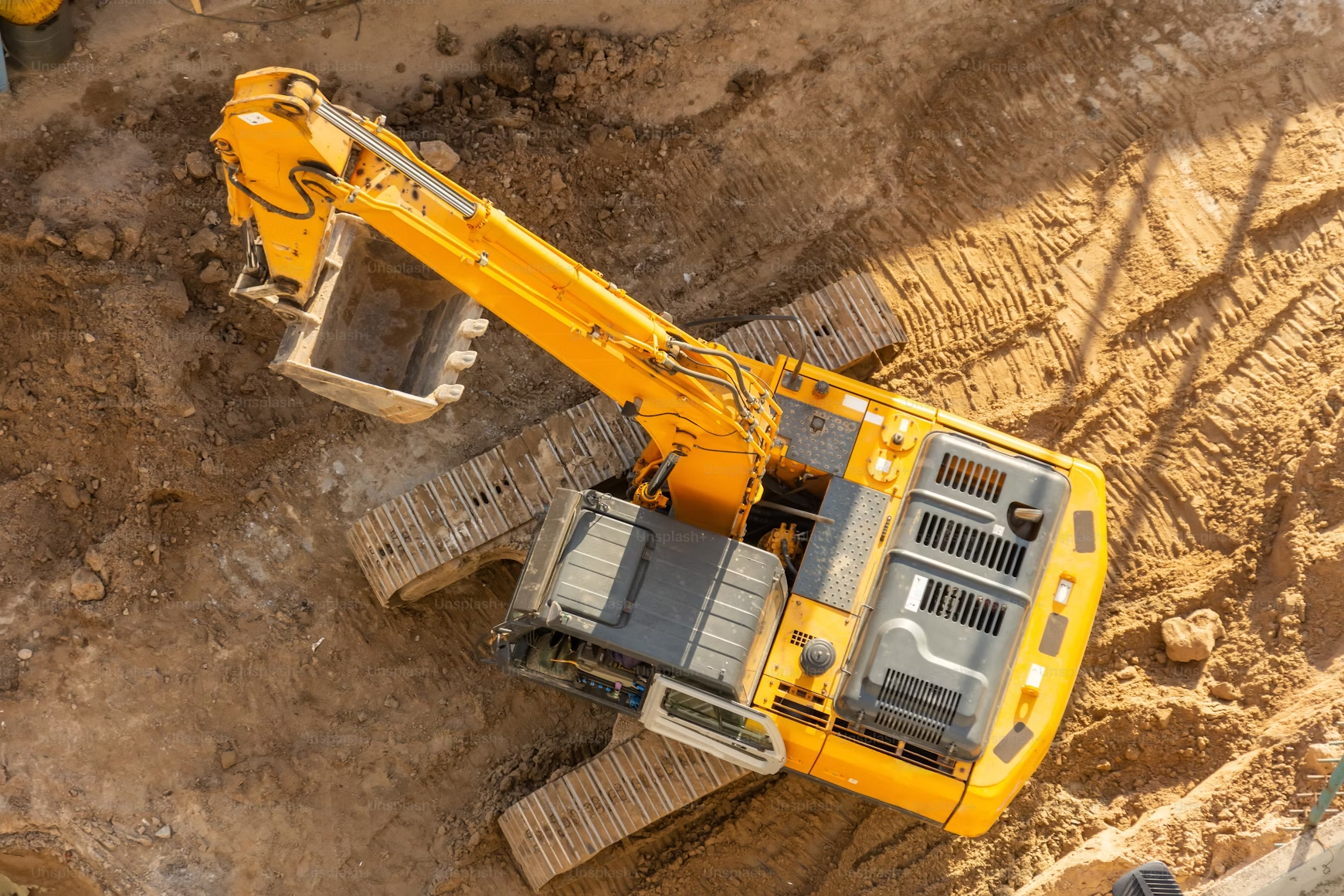What are the steps for construction roads? by Phillips Industries
Road construction is a complex process that involves various stages and requires careful planning and execution. It is a crucial infrastructure development activity that plays a vital role in connecting communities, facilitating transportation, and promoting economic growth. The construction of roads involves several steps, including planning, site preparation, foundation setting, road base laying, drainage system installation, asphalt surface application, marking and signage, testing and quality control, and ongoing maintenance and repairs.
Key Takeaways
- The purpose of a road is to provide safe and efficient transportation for vehicles and pedestrians.
- Planning the road construction process involves considering factors such as traffic flow, environmental impact, and budget.
- Clearing the construction site involves removing any obstacles and preparing the area for foundation work.
- Setting up the foundation involves creating a stable base for the road to prevent cracking and sinking.
- Laying the road base involves adding layers of materials to create a smooth and durable surface.
- Installing drainage systems is crucial to prevent water damage and erosion.
- Applying the asphalt surface involves using specialized equipment to create a smooth and even surface.
- Marking and signage are important for safety and navigation.
- Testing and quality control ensure that the road meets safety and durability standards.
- Maintenance and repairs are necessary to keep the road in good condition and prevent accidents.
Understanding the Purpose of the Road
Roads are essential for the development and progress of any society. They provide a means of transportation for people and goods, connecting cities, towns, and villages. Roads also play a crucial role in emergency services, allowing quick access to hospitals, fire stations, and police stations. Additionally, roads facilitate economic growth by providing access to markets and enabling the movement of goods and services.
There are different types of roads designed to serve specific purposes. Highways or expressways are major roads that connect cities and regions. They are designed for high-speed travel and have multiple lanes to accommodate heavy traffic. Local roads are smaller roads that connect neighborhoods and provide access to residential areas. They typically have lower speed limits and fewer lanes. Rural roads are designed to connect rural areas and agricultural regions. They may be unpaved or have a gravel surface.
Steps for Construction Roads
Before starting the road construction process, careful planning is essential. Several factors need to be considered, including the purpose of the road, traffic volume, terrain conditions, environmental impact, and budget constraints. The planning phase involves conducting surveys, analyzing data, and consulting with engineers and stakeholders.
Once the planning phase is complete, the road design is created. This involves determining the alignment of the road, including curves and slopes. The design also includes specifications for the road width, number of lanes, shoulders, medians, and intersections. Engineers use computer-aided design (CAD) software to create detailed plans and drawings that guide the construction process.
Clearing the Construction Site
Before construction can begin, the construction site needs to be prepared and cleared of any obstacles. This involves removing vegetation, trees, rocks, and other debris. The site is also leveled to ensure a smooth and even surface for the road construction.
Clearing the construction site is an important step as it allows for proper access and visibility during the construction process. It also ensures that there are no obstructions that could hinder the progress of the construction work or pose a safety risk to workers and equipment.
Setting up the Foundation
A strong foundation is crucial for the longevity and durability of a road. The foundation provides support for the road structure and helps distribute the weight of vehicles evenly. It also helps prevent settlement and deformation of the road surface.
The materials used for the foundation depend on various factors, including soil conditions, traffic volume, and climate. Common materials used for road foundations include crushed stone, gravel, and sand. These materials are compacted to create a stable base that can withstand heavy loads and provide a solid platform for the road construction.
Laying the Road Base

Once the foundation is in place, the next step is to lay the road base. The road base is a layer of material that sits on top of the foundation and provides additional support and stability to the road surface. It helps distribute the load from vehicles and prevents cracking and deformation.
The materials used for the road base can vary depending on factors such as traffic volume, climate, and budget constraints. Common materials used for road bases include crushed stone, gravel, and asphalt. These materials are compacted to create a smooth and even surface that can withstand heavy traffic.
Installing Drainage Systems
Proper drainage is essential for maintaining the integrity of a road. Without adequate drainage, water can accumulate on the road surface, leading to erosion, potholes, and other damage. It can also create hazardous driving conditions, especially during heavy rainfall.
There are different types of drainage systems that can be installed during the road construction process. These include culverts, ditches, and stormwater management systems. Culverts are structures that allow water to flow under the road, preventing it from pooling on the surface. Ditches are channels that collect and redirect water away from the road. Stormwater management systems are designed to capture and treat runoff from the road surface, reducing the impact on the environment.
Applying the Asphalt Surface
The asphalt surface is the final layer of the road construction process. It provides a smooth and durable surface for vehicles to travel on. The asphalt surface is made up of a mixture of aggregates, such as crushed stone and sand, and a binder, such as asphalt cement.
The materials used for the asphalt surface are carefully selected to ensure durability and resistance to wear and tear. The mixture is heated and then applied to the road surface using specialized equipment. Once applied, it is compacted to create a smooth and even surface.
Marking and Signage
Markings and signage play a crucial role in ensuring the safety and efficiency of a road. They provide important information to drivers, such as speed limits, lane markings, and directional signs. Markings also help delineate lanes and guide traffic flow.
There are different types of markings and signage used on roads. These include painted lines, reflective markers, traffic signs, and pavement markings. Painted lines are used to indicate lane boundaries, crosswalks, and stop lines. Reflective markers are used to enhance visibility at night or in low-light conditions. Traffic signs provide information about speed limits, intersections, and other important details. Pavement markings include symbols and arrows that guide drivers and indicate parking spaces or bike lanes.
Testing and Quality Control
Testing and quality control are essential to ensure that the road construction meets the required standards and specifications. Various tests are conducted throughout the construction process to assess the quality of materials, compaction levels, and overall performance of the road.
Some common tests conducted during road construction include compaction tests, asphalt density tests, and skid resistance tests. Compaction tests measure the density and compaction of the materials used for the road base and asphalt surface. Asphalt density tests assess the quality of the asphalt mixture and ensure proper compaction. Skid resistance tests measure the friction between the road surface and vehicle tires, ensuring safe driving conditions.
Maintenance and Repairs
Proper maintenance and timely repairs are crucial for ensuring the longevity and safety of a road. Regular inspections are conducted to identify any signs of wear and tear, such as cracks, potholes, or drainage issues. Prompt repairs are then carried out to address these issues before they worsen.
Maintenance activities for roads include routine cleaning, vegetation control, and pavement preservation treatments. Repairs may involve patching potholes, resurfacing damaged areas, or replacing drainage systems. Regular maintenance and repairs help extend the lifespan of a road and reduce the need for costly reconstruction in the future.
 In conclusion, road construction is a complex process that involves careful planning, site preparation, foundation setting, road base laying, drainage system installation, asphalt surface application, marking and signage, testing and quality control, and ongoing maintenance and repairs. Proper road construction is essential for connecting communities, facilitating transportation, promoting economic growth, and ensuring safe driving conditions. By understanding the various stages of road construction and implementing best practices, we can create durable and efficient roads that serve their purpose for years to come.
In conclusion, road construction is a complex process that involves careful planning, site preparation, foundation setting, road base laying, drainage system installation, asphalt surface application, marking and signage, testing and quality control, and ongoing maintenance and repairs. Proper road construction is essential for connecting communities, facilitating transportation, promoting economic growth, and ensuring safe driving conditions. By understanding the various stages of road construction and implementing best practices, we can create durable and efficient roads that serve their purpose for years to come.
If you’re interested in learning more about the construction of roads, you may also want to check out Phillips Industries’ article on land clearing in Texas. This informative piece discusses the crucial step of clearing land before road construction can begin. It highlights the importance of proper land preparation and the various techniques used to clear vegetation, trees, and debris from the site. To read more about this topic, visit May Texas Land Clearing.
Visit some of our other services
Road builders in Texas | Building Pad Contractor in Texas | Patio Builder in Texas | Dozer Services in Texas |

What is road construction?
Road construction is the process of building or improving roads, highways, streets, and other transportation infrastructure.
What are the steps involved in road construction?
The steps involved in road construction include planning, surveying, designing, acquiring permits, clearing the site, grading the site, laying the sub-base, laying the base course, laying the surface course, installing drainage systems, and adding finishing touches.
What is the planning phase of road construction?
The planning phase of road construction involves identifying the need for a new road or the improvement of an existing road, determining the route, and estimating the cost.
What is surveying in road construction?
Surveying in road construction involves measuring and mapping the land where the road will be built, including the topography, soil conditions, and existing infrastructure.
What is designing in road construction?
Designing in road construction involves creating detailed plans and specifications for the road, including the width, thickness, and materials to be used.
What is acquiring permits in road construction?
Acquiring permits in road construction involves obtaining the necessary approvals and permits from government agencies and other stakeholders.
What is clearing the site in road construction?
Clearing the site in road construction involves removing trees, rocks, and other obstacles from the land where the road will be built.
What is grading the site in road construction?
Grading the site in road construction involves leveling the land and creating a smooth, even surface for the road.
What is laying the sub-base in road construction?
Laying the sub-base in road construction involves adding a layer of crushed stone or gravel to provide a stable foundation for the road.
What is laying the base course in road construction?
Laying the base course in road construction involves adding a layer of asphalt or concrete to provide a smooth, durable surface for the road.
What is laying the surface course in road construction?
Laying the surface course in road construction involves adding a final layer of asphalt or concrete to provide a smooth, skid-resistant surface for the road.
What is installing drainage systems in road construction?
Installing drainage systems in road construction involves adding culverts, ditches, and other features to prevent water from accumulating on the road and causing damage.
What are the finishing touches in road construction?
The finishing touches in road construction include adding road markings, signs, and landscaping to improve the safety and appearance of the road.
Page Design by Local web designer






